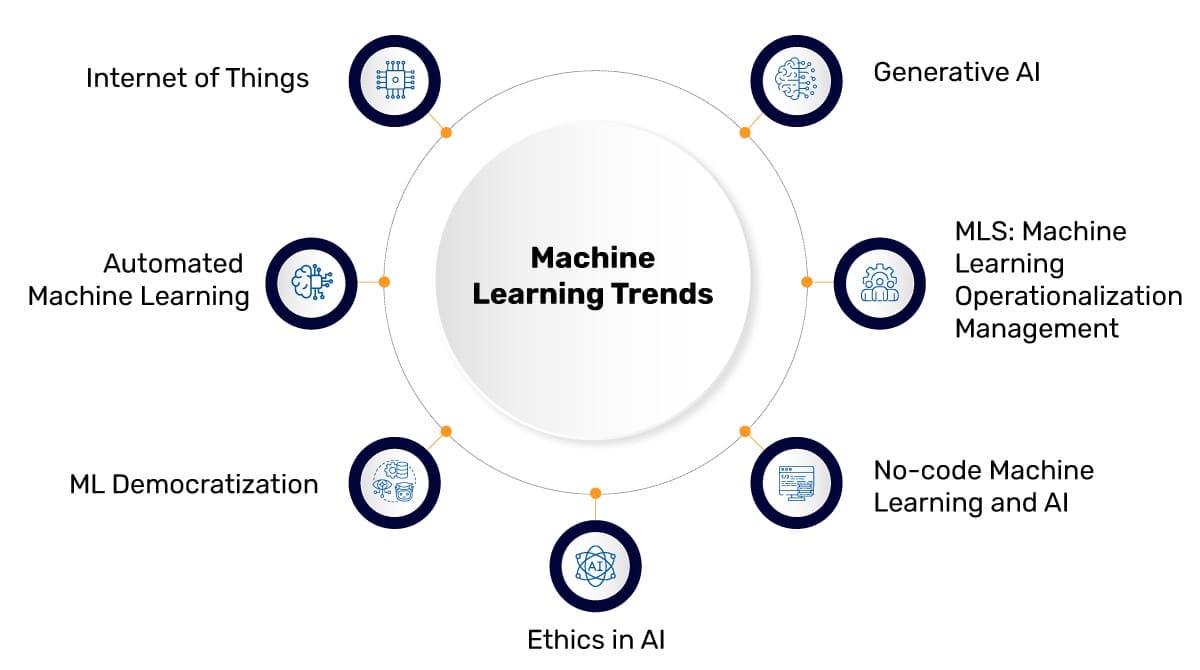
Introduction
Defining Machine Learning
Machine learning is a subset of artificial intelligence (AI) that empowers systems to learn from data, improving their performance over time without explicit programming. Imagine the way a child learns to ride a bicycle by practicing repeatedly, adjusting balance and speed through experience. Similarly, machine learning algorithms analyze vast datasets, identify patterns, and make decisions based on learned insights. This process is crucial in fields as diverse as healthcare, finance, and marketing.
Significance of Machine Learning in 2025
As we approach 2025, the significance of machine learning is expected to amplify dramatically. Here’s how:
- Enhanced Decision Making: Businesses will rely heavily on predictive analytics to guide strategic decisions.
- Personalization: Consumers will experience more tailored services and product recommendations.
- Efficiency in Operations: Automation of routine processes will free up resources for innovation.
The future of machine learning holds immense potential for improving human lives and industries alike, making it a vital focus for organizations and individuals looking to thrive in an increasingly data-driven world. As noted by our blog TECHFACK, harnessing the capabilities of machine learning will be crucial for success in the coming years.
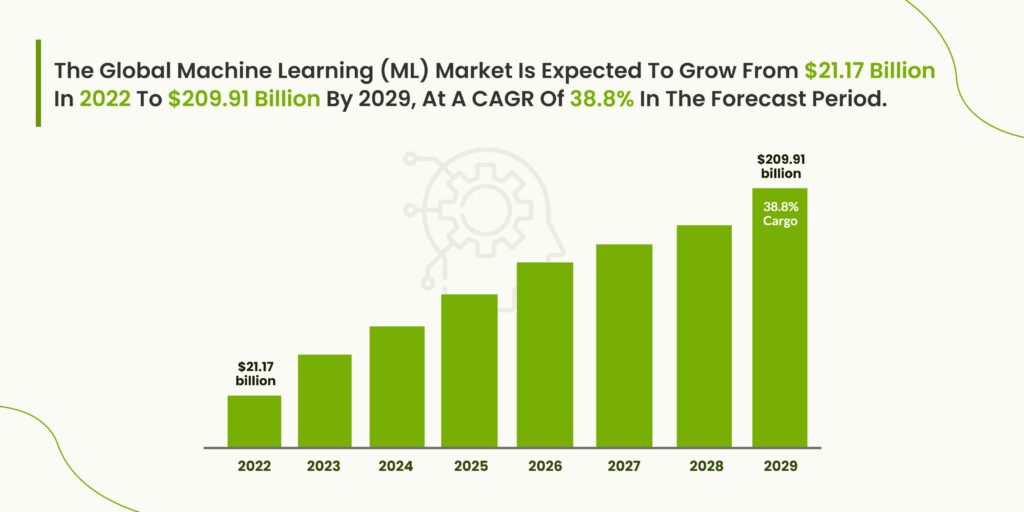
Evolution of Machine Learning
Historical Context
To appreciate the current landscape of machine learning, it’s insightful to look back at its historical roots. The concept first emerged in the late 1950s when computer scientists began exploring how machines could mimic human learning processes. Early algorithms were simplistic, yet they laid the groundwork for future advancements.
For example, the perceptron, developed by Frank Rosenblatt in 1958, was one of the first models that could perform binary classifications. This laid the foundation for neural networks, which are now widely used in the field.
Major Milestones in Machine Learning Development
Since those early days, several key milestones have shaped the evolution of machine learning:
- 1967: The introduction of backpropagation allowed neural networks to learn more complex patterns.
- 1997: IBM’s Deep Blue defeated world chess champion Garry Kasparov, showcasing the power of algorithms.
- 2012: A breakthrough in deep learning occurred when a neural network won the ImageNet competition, marking the rise of deep learning.
These milestones illustrate the rapid advancements that have propelled machine learning into mainstream applications today. Each step has not only enhanced our understanding but also enriched various industries, ultimately shaping the future of machine learning as we know it.

Current Trends in Machine Learning
Deep Learning Advancements
In recent years, deep learning has taken center stage in the machine learning arena, revolutionizing how computers interpret and process vast amounts of data. These advancements, reminiscent of how humans learn in layers, have led to significant breakthroughs in various applications.
- Natural Language Processing (NLP): Models such as OpenAI’s GPT series are capable of generating human-like text, transforming content creation.
- Computer Vision: Technologies used in facial recognition and autonomous vehicles have been enhanced through deep learning techniques.
For instance, self-driving cars leverage these advancements to interpret their surroundings, a feat unimaginable just a decade ago.
Ethical Considerations in Machine Learning
With great power comes great responsibility. As machine learning continues to evolve, so too do the ethical implications associated with its use. Concerns include:
- Data Privacy: The collection and utilization of personal data lead to calls for stricter regulations.
- Bias in Algorithms: Ensuring that algorithms are fair and do not perpetuate existing societal biases is paramount.
Industry leaders, including those highlighted in our blog TECHFACK, emphasize the need for transparent practices. Addressing these ethical concerns will be crucial for fostering trust and harnessing the full potential of machine learning in society.

Applications of Machine Learning in Various Industries
Healthcare Sector
In the healthcare sector, machine learning is making significant strides, transforming patient care and diagnosis. A prime example is the use of predictive analytics to forecast patient outcomes. Hospitals are using machine learning algorithms to analyze historical patient data, allowing them to identify those at risk for conditions such as diabetes or heart disease before symptoms arise.
- Image Analysis: Machine learning models are being trained to read medical images, detecting anomalies like tumors faster and often with greater accuracy than human radiologists.
- Personalized Medicine: By tailoring treatments based on individual patient data, machine learning helps healthcare providers offer targeted therapies, optimizing results.
Finance and Banking
Similarly, in finance and banking, machine learning’s impact is profound. Institutions leverage these technologies to enhance customer experiences and manage risks effectively.
- Fraud Detection: Algorithms analyze transaction patterns in real-time to identify and prevent fraudulent activities, a process crucial for protecting both banks and customers.
- Algorithmic Trading: Financial firms utilize machine learning to predict market fluctuations, enabling rapid trading decisions based on real-time data analysis.
By improving operational efficiency and decision-making, machine learning is not just reshaping industries like healthcare and finance; it’s also becoming a central pillar of innovation and transformation across the board.

Future Projections for Machine Learning
Predictive Analytics
Looking ahead, predictive analytics is set to revolutionize how organizations make decisions. By harnessing the power of machine learning, businesses will gain deeper insights into consumer behavior and market trends. Imagine a retailer forecasting inventory needs based on shopping patterns, or a travel company predicting peak booking times.
- Data-Driven Decisions: Organizations will rely increasingly on predictive models to enhance operational efficiency and customer satisfaction.
- Risk Management: Industries like insurance will benefit from refined risk assessment tools, allowing for more accurate premium calculations.
This proactive approach will not only enhance productivity but also foster innovative solutions for complex challenges.
Automation and Robotics
In tandem with predictive analytics, automation and robotics will continue to shape the future landscape. Machine learning enables robots to learn from their environment and improve their performance over time, driving efficiencies across various sectors.
- Manufacturing: Machine learning-driven robots will manage assembly lines more effectively, reducing downtime and enhancing productivity.
- Service Industries: In sectors like hospitality, robots equipped with machine learning capabilities will improve customer service by managing bookings and answering queries seamlessly.
The combination of predictive analytics and automation will undoubtedly catalyze a new era of efficiency and innovation, marking significant milestones on the journey of machine learning’s future.

Challenges and Opportunities in Machine Learning
Data Privacy Concerns
While the advancements in machine learning present exciting opportunities, they also come with significant challenges, particularly regarding data privacy. As organizations collect vast amounts of personal data to train their models, the risks associated with data breaches and misuse heighten.
- Regulatory Compliance: Companies must navigate complex regulations like GDPR, ensuring they handle personal data responsibly.
- Trust Issues: Consumers are increasingly wary of how their data is used. Building trust through transparent practices will be crucial.
For instance, a healthcare provider using patient data for diagnosis tools must prioritize protecting sensitive information to maintain patient trust and comply with legal standards.
Skill Requirements for Future Workforce
Another challenge lies in the skills gap within the workforce. As machine learning technologies continue to evolve, the need for qualified professionals is more pressing than ever.
- Emerging Roles: New job titles such as data scientists and machine learning engineers are rapidly becoming essential.
- Continuous Learning: Upskilling and reskilling will be vital as technologies advance, ensuring that professionals remain relevant.
Organizations, including those highlighted on our blog TECHFACK, will need to invest in training programs to cultivate talent and navigate the complexities of this evolving landscape. Addressing these challenges head-on presents a unique opportunity for companies to innovate responsibly while contributing to a skilled workforce ready to tackle the future of machine learning.
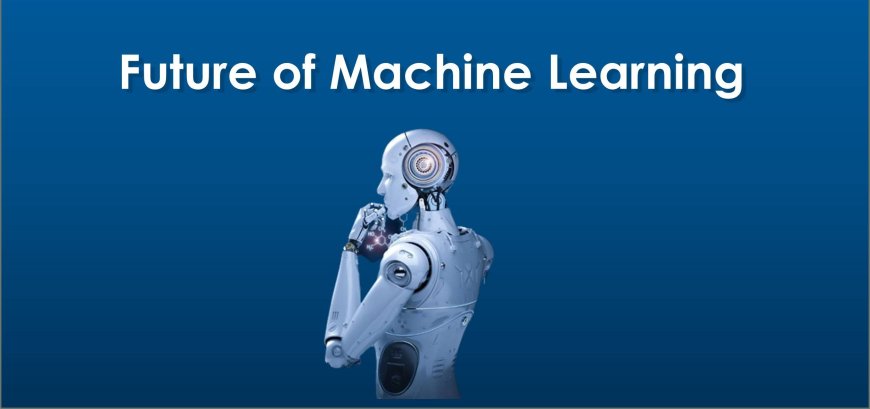
Impact of Machine Learning on Society
Job Market Changes
The proliferation of machine learning is reshaping the job market in profound ways. While there’s a common concern that automation will replace jobs, the reality is more nuanced. Yes, certain roles may diminish, but new opportunities are emerging in unexpected areas.
- New Job Creation: Positions like machine learning engineers, data analysts, and AI ethicists are gaining prominence.
- Reskilling Programs: Companies are beginning to invest in training their employees, preparing them for the new roles that machine learning brings.
For example, a manufacturing firm might transition some workers to data analysis roles, utilizing their industry knowledge in conjunction with new skills.
Social Implications of Widespread Machine Learning Adoption
Beyond the job market, the social implications of widespread machine learning adoption are equally significant.
- Access to Services: Machine learning can enhance access to essential services like healthcare and education, providing tailored solutions to underserved communities.
- Equity and Inclusion: By addressing biases in algorithms, machine learning has the potential to promote equity, but it also poses risks if not managed carefully.
As highlighted in our blog TECHFACK, the key to leveraging these technologies lies in ensuring they are implemented ethically and responsibly, fostering a society that maximizes benefits while minimizing drawbacks. This balanced approach will be essential as we navigate the complexities of a machine learning-driven world.
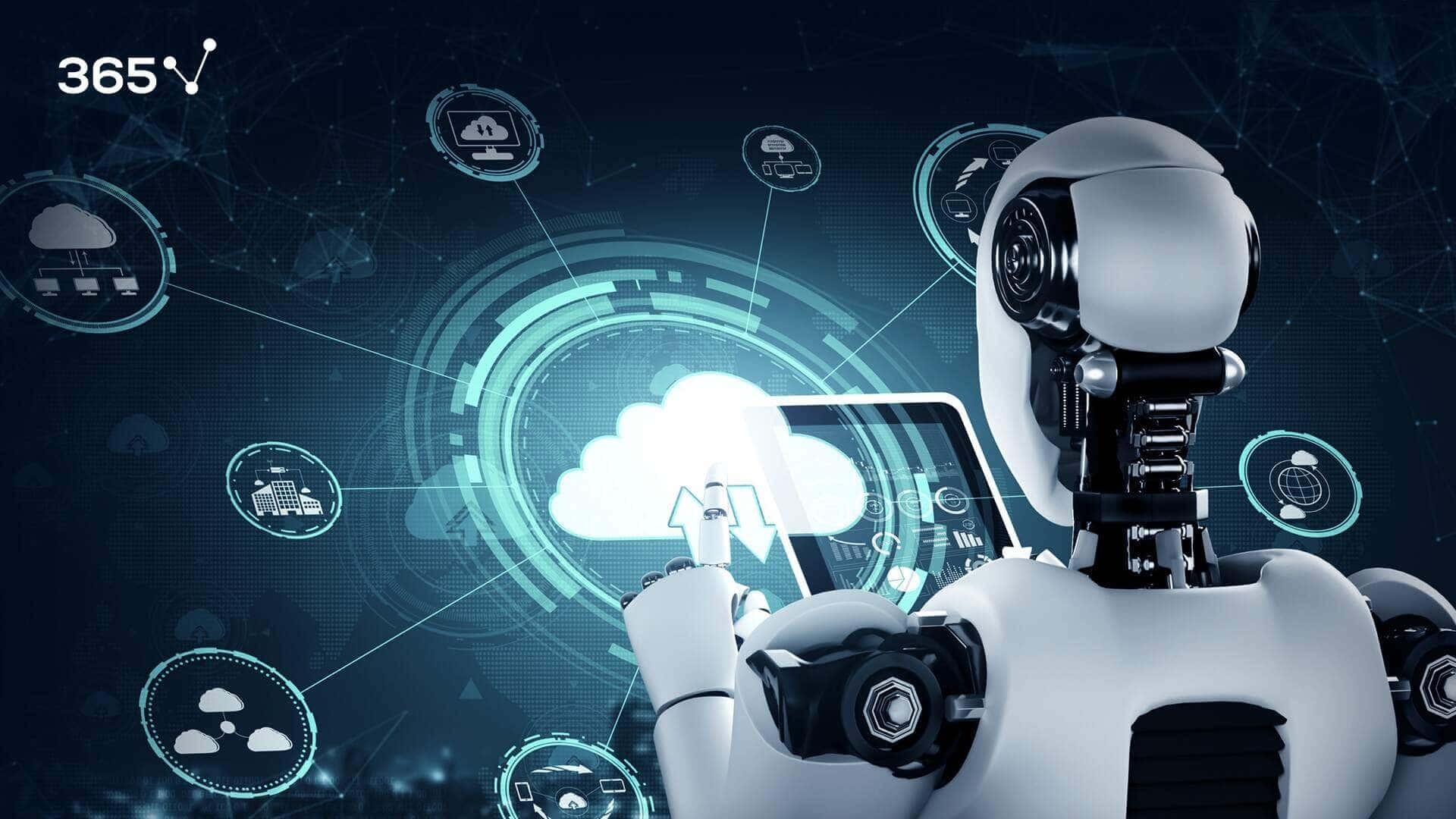
Emerging Technologies Shaping the Future of Machine Learning
Quantum Computing
As we look to the future of machine learning, quantum computing emerges as a game changer. This cutting-edge technology harnesses the principles of quantum mechanics to process information at unprecedented speeds. Imagine solving complex problems that currently take classical computers years to compute, all achieved in seconds.
- Enhanced Computational Power: Quantum computers can handle infinitely more data, making machine learning models more accurate and efficient.
- Complex Problem-Solving: They have the potential to revolutionize fields like drug discovery, where intricate molecular simulations could be modeled simultaneously.
While still in its infancy, the fusion of quantum computing and machine learning holds immense potential for breakthroughs we can barely imagine today.
Edge Computing
Another revolutionary technology shaping the future landscape of machine learning is edge computing. By processing data closer to its source—such as IoT devices or local servers—edge computing reduces latency and accelerates processing times.
- Real-Time Decision Making: This is particularly beneficial for applications like autonomous vehicles that require instant data processing for safe navigation.
- Reduced Bandwidth Costs: By minimizing the amount of data sent to centralized servers, edge computing optimizes bandwidth usage.
As highlighted in our blog TECHFACK, the marriage of quantum and edge computing with machine learning will unlock new capabilities, enhancing both efficiency and functionality across numerous industries. These technologies will undoubtedly play a crucial role in shaping the future, providing innovative solutions to some of society’s most complex challenges.
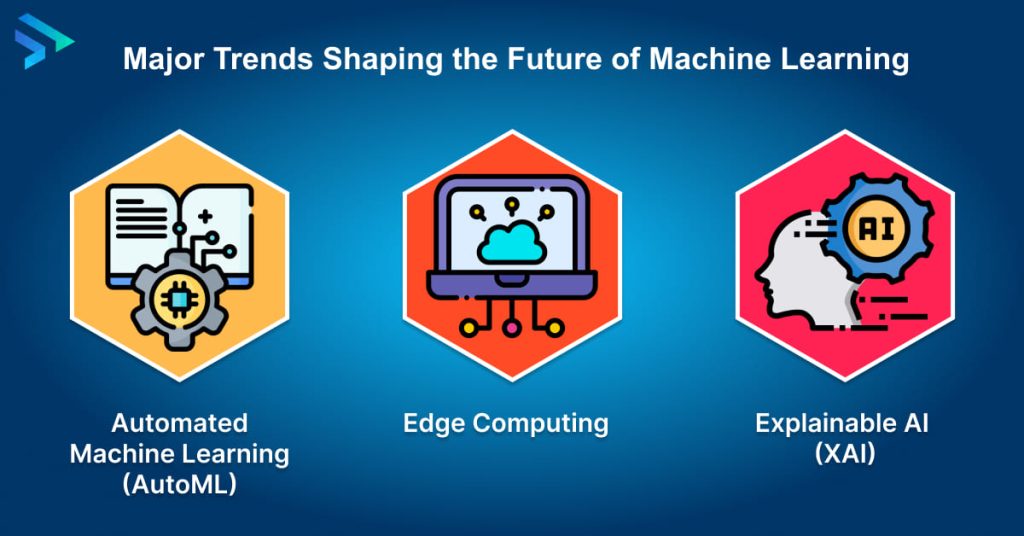
Strategies for Harnessing the Potential of Machine Learning
Investment in Research and Development
To fully harness the potential of machine learning, organizations must prioritize investment in research and development (R&D). This commitment not only cultivates innovative solutions but also positions businesses at the forefront of technological advancement.
- Funding Innovative Projects: By allocating resources to R&D, companies can explore cutting-edge applications of machine learning, from healthcare diagnostics to autonomous systems.
- Fostering a Culture of Innovation: Encouraging teams to experiment and iterate can lead to groundbreaking discoveries, much like how Google nurtured its early ideas into transformative technologies.
Investing in R&D is an essential strategy for companies eager to leverage the power of machine learning effectively.
Collaboration between Industries and Academia
Another strategic avenue is establishing collaborations between industries and academic institutions. This partnership can bridge the gap between theoretical research and practical application.
- Talent Development: Academic environments produce a steady stream of skilled professionals ready to innovate in the field.
- Access to Resources: Companies gain access to fresh perspectives and advanced research facilities, accelerating development.
For instance, initiatives like internships and research partnerships allow businesses to tap into academic insights while providing students with real-world experience. As explored in our blog TECHFACK, such collaborations can create a symbiotic relationship that drives progress, resulting in advancements that benefit both sectors. Together, these strategies can create a robust foundation for future innovation in machine learning.
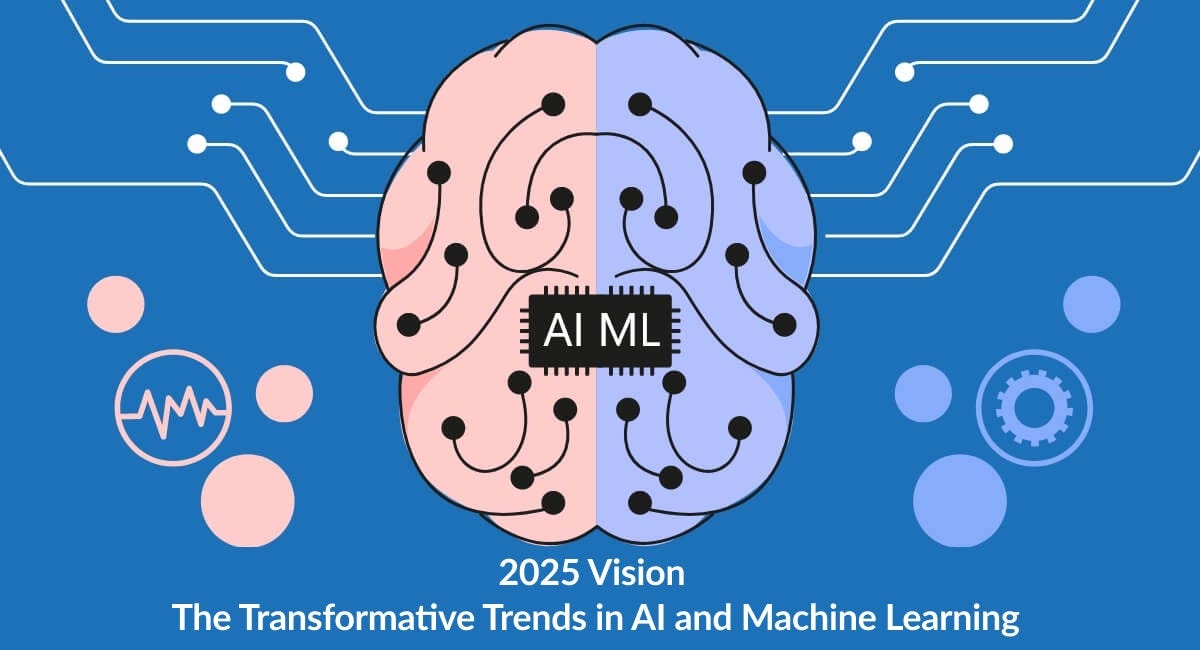
Conclusion and Key Takeaways
Recap of Future Trends
As we navigate the exciting landscape of machine learning, several future trends stand out. From the monumental rise of deep learning to the integration of quantum and edge computing, the potential for innovation is immense. Areas like predictive analytics and automation promise to reshape industries, while ethical considerations and data privacy remain crucial themes that require ongoing attention.
- Rapid Technological Advancements: Look forward to breakthroughs in areas like healthcare and finance.
- Increased Collaboration: Partnerships between industries and academia will help drive talent and innovation.
These trends are not just reshaping how we interact with technology; they’re also creating new opportunities across sectors.
Recommendations for Individuals and Businesses in the ML Space
For individuals and businesses eager to thrive in the machine learning space, consider these actionable steps:
- Invest in Learning: Continuous education in machine learning techniques and tools is essential. Online courses and workshops can provide valuable skills.
- Embrace Collaboration: Partner with educational institutions to access expertise and research advancements.
- Stay Ethical: Prioritize data privacy and fairness in all ML applications to build trust and credibility.
By taking these steps, organizations and professionals can position themselves to harness the exciting opportunities that machine learning presents, ultimately contributing to a more innovative and responsible technological future. The insights shared in our blog TECHFACK highlight that the journey into machine learning is just beginning, and there is much to explore ahead.

